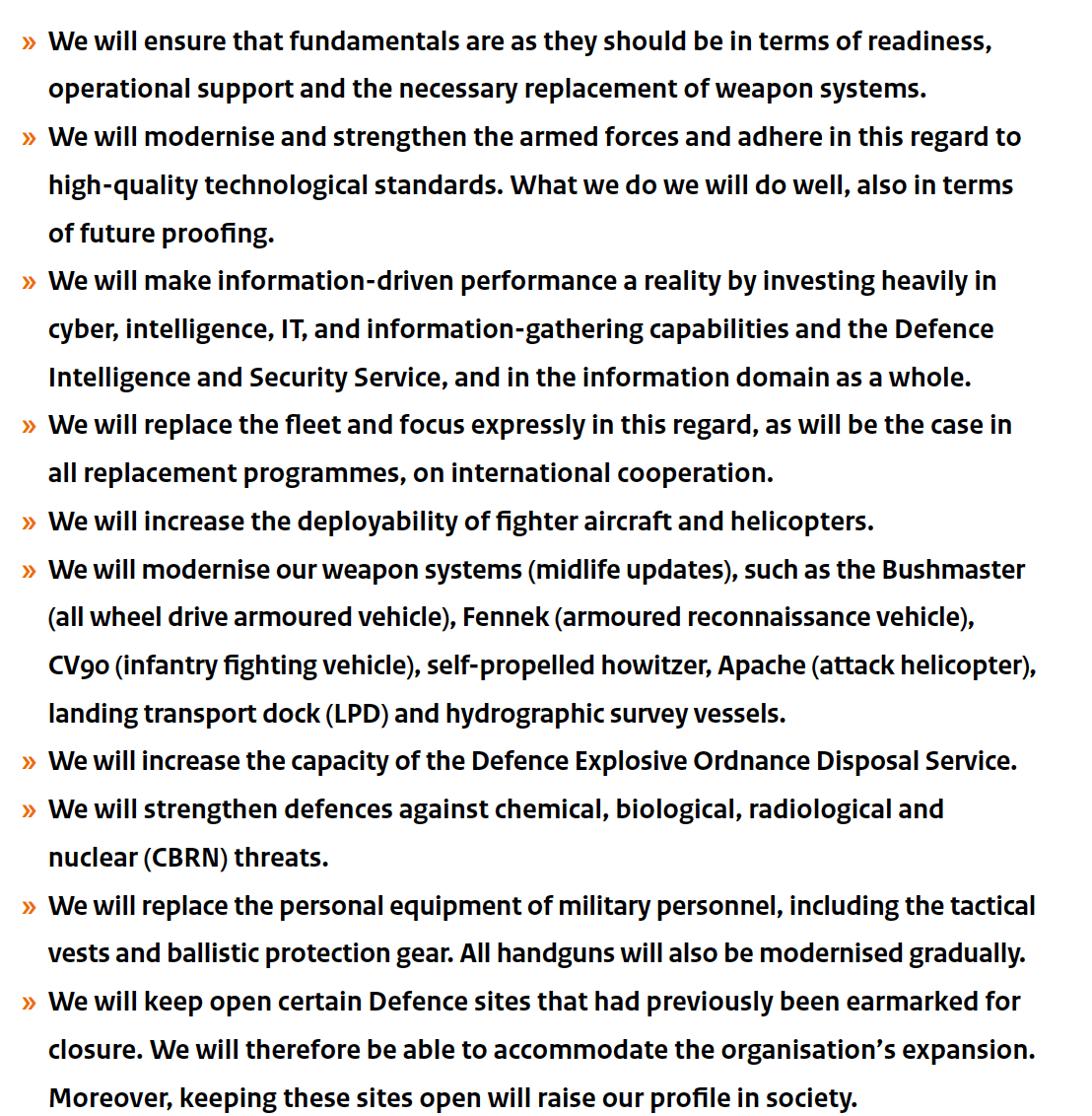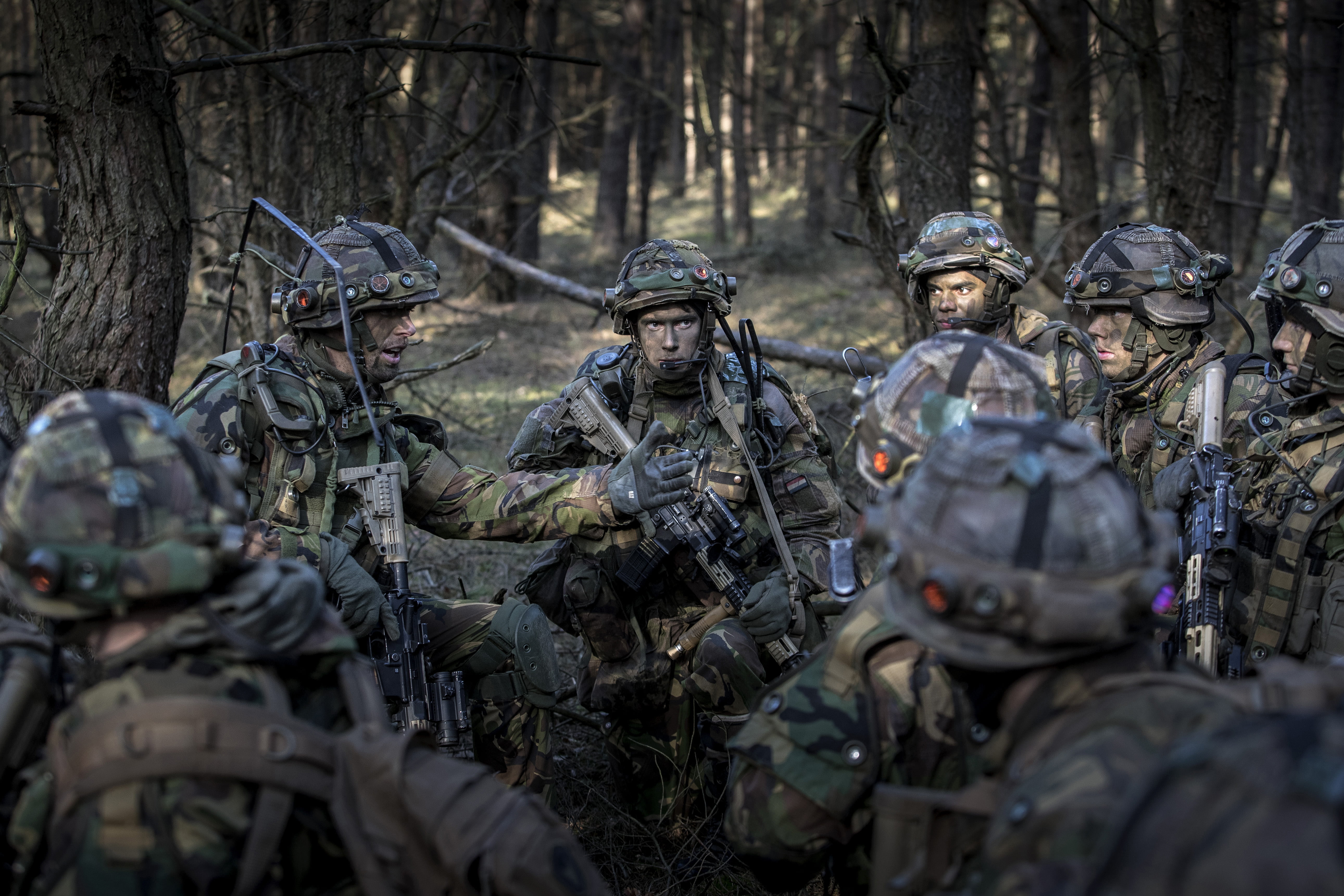This past March, the Dutch government released a new defence white paper.
According to the MoD statement published on March 26, 2018:
The Netherlands Ministry of Defence can once again have confidence in the future.
After years of budget cuts, the Defence organisation is investing in its people, capabilities and visibility.
Personnel will be given the equipment they need to work as effectively and safely as possible. Capabilities will be enhanced by the procurement of new materiel and by the modernisation of existing resources. Investments will be made in IT and cyber.
The Ministry of Defence will also work more intensively with partners, such as the business community, NATO and the EU.
In view of the deterioration of the security situation, an agile military force is vital. NATO is demanding larger and more robust units for allied defence, and the United Nations and the EU are turning to the Defence organisation increasingly often.
In the Netherlands, too, the military needs to be there when needed.
The restoration and reinforcement of the military organisation is therefore urgently needed.
And that is going to happen.
How?
In what areas?
To be able to do what?
And why?
This is all outlined in the Defence White Paper published today.
Capabilities
The document, entitled ‘Investing in our people, capabilities and visibility’, sets out what the armed forces are going to look like in the coming years. T
he White Paper states, for example, that capabilities will be enhanced by the modernisation of weapon systems, and the replacement and procurement of ships. Information-driven operations will also be a priority, as will increasing the deployability of fighter aircraft and helicopters.
The ever-changing security situation calls for an agile, robust military force. A force that adapts quickly and is there when it is needed. What does that mean in practice?
The Defence White Paper explains.
It also details what will be improved in the various elements of the Defence organisation. Much is possible with the extra money that will be allocated to the Defence budget over the years to come.
The White Paper is full of plans, not only with regard to materiel, but especially with regard to personnel. Aspects such as improved career guidance, terms of employment, staying in a function longer, and the availability of new personal kit.
The changes will take time, however.
New personnel need to be trained and materiel procurement takes time to process.
Start of a journey
As far as Minister Ank Bijleveld-Schouten and State Secretary Barbara Visser are concerned, this Defence White Paper is not a destination, but the start of a journey along a path that determines the direction for the future.
A future in which the Netherlands once again has a healthy military force, robust and agile. Follow-up steps are needed for this. These too are outlined in the Defence White Paper.
The Ministry of Defence wants to be an organisation for which people are proud to work, an organisation that is visible in society.
An organisation that is a good partner to civil authorities, the European Union, NATO, the business community and societal organisations.
A military force with sufficient means and people, satisfied personnel with faith in the organisation.
The introduction of the White Paper highlights the way ahead:
We operate in a world that is changing and becoming less safe. Threats are complex, diverse and unpredictable.
The vulnerability of the Netherlands and of people throughout the world has increased. As a nation, we are strongly connected with the rest of the world.
The security of the Netherlands is thus also intertwined with security situations in other parts of the world.
The first main task, protecting national territory and the territory of allies, has therefore become more important in recent years.
The importance of the other two main tasks has likewise increased. Because of the greater instability in the world, a greater commitment is required for all of the main tasks.
It was with this in mind that we considered how the additional investments amounting to EUR 1.5 billion a year could best be spent.
This is based on the Netherlands integrated foreign and security strategy of the Minister of Foreign Affairs.
First, we will invest in our people.
They keep us safe and are there when they are needed. We want to restore their trust in the organisation and thereby ensure that they remain with the organisation.
Moreover, we want to recruit new employees and will focus on diversity. We will also invest in means. The emphasis in this regard will be on modernising our current strike capabilities and strengthening ourinformation-driven operating methods.
The third key area of investment will be methods. We will focus efforts in this area on increasing and improving national and international cooperation to ensure that the organisation evolves into one that is robust and agile.
We will make every effort in the coming years to implement the measures set out in this white paper. In many cases, results will only become visible after a few years.
That is unfortunately the reality we face. It takes time to attract and train people, produce material and make it operational.
Nevertheless, a number of changes will become apparent in the short term. New colleagues will be joining us, supply levels will be improved and more exercises are being planned.
Furthermore, unnecessary rules will be abolished and commanders will have greater discretionary power in the sphere of practical execution.
We will also become visible again in society. Military personnel may once again travel in uniform.
After further consideration, certain Defence sites throughout the country that had previously been earmarked for closure will be maintained.
Royal Netherlands Marechaussee personnel will also become more visible at the border.
Furthermore, the recruitment of new employees will be organised at regional level to augment current national-level efforts and we will strengthen our cooperation with other organisations.
We are also collaborating in the preparation of the community work placement programme for young people.
All this will contribute to the versatility and readiness of the Netherlands armed forces. NATO has drawn up capability targets for the Netherlands which require further steps.
Given the foregoing, this white paper does not constitute an end point. Rather, it is a step that is in line with the long-term objectives that were included in the NATO agreements made during the 2014 Wales Summit.
The White Paper is well worth reading and here is one graphic from the White Paper which provides a sense of how the Dutch government sees the way ahead:

The featured photo shows Dutch soldiers in the Peacock Supremacy Exercise and is credited to the Dutch Ministry of Defence. The Field Training Exercise Peacock Supremacy was held at the German Army Combat Training Center in Letzlingen in February 2018.


